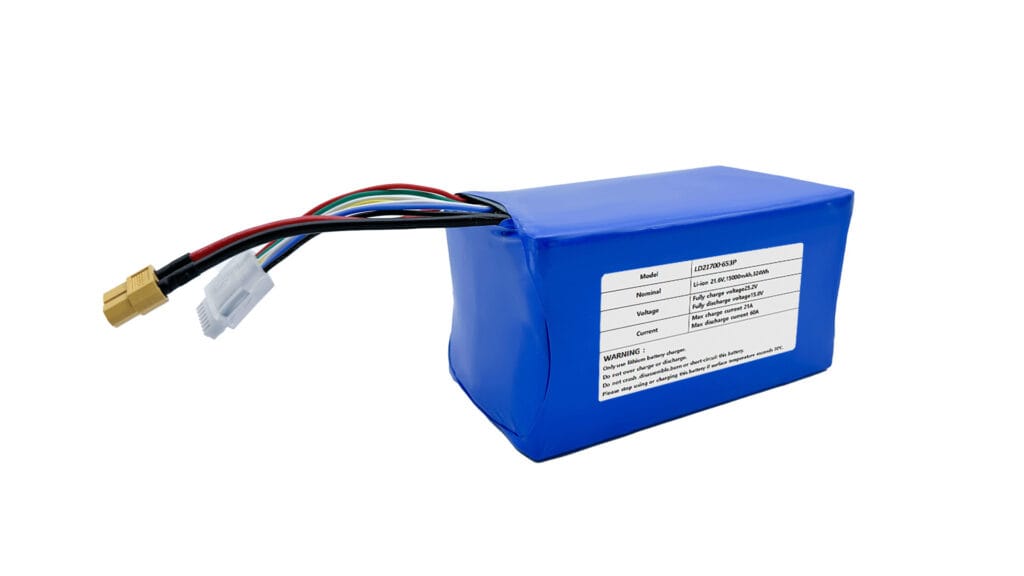Lithium polymer (LiPo) batteries power everything from drones and RC cars to portable electronics and medical devices. While they offer high energy density and lightweight performance, improper storage can lead to safety hazards, reduced lifespan, or even catastrophic failure. Whether you’re a hobbyist, engineer, or everyday user, understanding how to store liPo batteries safely is critical. This guide covers best practices for storage environments, durations, and scenarios—along with science-backed tips to maximize battery health.
Introduction
LiPo batteries have become a popular energy source due to their high energy density, lightweight design, and flexibility in shape and size. However, their volatile chemistry requires careful handling, especially during storage. Improper storage can lead to reduced capacity, decreased lifespan, or even dangerous situations such as fire hazards. This guide is designed to help you master lipo battery storage techniques, ensuring both safety and optimal performance.
Why Is It Important to Store LiPo Batteries Safely?
Safe storage of LiPo batteries is paramount for several reasons:
- Safety: LiPo batteries can become unstable if overcharged, exposed to extreme temperatures, or physically damaged. In worst-case scenarios, they may swell, catch fire, or even explode. Ensuring that batteries are stored under controlled conditions minimizes these risks.
- Battery Health: Proper storage slows down the chemical degradation process that naturally occurs over time. By maintaining the correct charge level and environment, you can prolong the battery’s overall lifespan and performance.
- Cost-Effectiveness: LiPo batteries represent a significant investment, especially custom-designed ones. Preserving their integrity through proper storage practices can save money on replacements and repairs.
- Regulatory Compliance: For transportation and storage—especially in industrial or public settings—there are guidelines and regulations in place to ensure safety. Adhering to these can help avoid legal complications.
According to the Occupational Safety and Health Administration (OSHA), improper battery storage is a leading cause of workplace incidents involving lithium batteries.
Environmental Factors Affecting LiPo Batteries
The performance and longevity of your LiPo batteries are significantly influenced by the storage environment. Here, we detail the most critical environmental factors and their impact:
Temperature
Temperature control is one of the most critical factors in lipo battery storage:
- High Temperatures: Excess heat accelerates chemical reactions inside the battery, leading to faster degradation and a higher risk of thermal runaway—a condition where the battery overheats and potentially catches fire. Avoid storing batteries in areas exposed to direct sunlight or near heat sources.
- Low Temperatures: Extremely cold conditions can reduce battery performance and may cause the electrolyte to thicken, potentially damaging the battery’s internal structure. While cold storage slows degradation, abrupt temperature changes should be avoided to prevent condensation.
Keeping LiPo batteries in a controlled temperature environment—ideally between 15°C to 25°C (59°F to 77°F)—ensures that they remain stable and efficient. (Source: Battery University)
Humidity
Humidity is another key factor in battery storage best practices:
- High Humidity: Excess moisture can lead to corrosion of internal components and external contacts, resulting in diminished performance or even failure.
- Low Humidity: Extremely dry conditions are generally better; however, it is important to avoid overly arid environments that might lead to static discharge, which can damage sensitive electronic components.
A cool, dry place is optimal for LiPo batteries, as it minimizes the risk of moisture-related degradation and electrical issues.
Charge Level
How much charge a LiPo battery holds during storage plays a vital role in its longevity:
- Partial Charge: Storing LiPo batteries at around 40–60% charge is recommended. A partial charge reduces the stress on the battery’s chemical components, thereby prolonging its life.
- Full or Zero Charge: Keeping a battery fully charged or completely drained for extended periods can lead to irreversible capacity loss. Batteries stored at full charge may experience voltage stress, while fully discharged batteries are more prone to deep discharge damage.
Thus, monitoring and maintaining an optimal charge level is crucial for safe LiPo storage.
Additional Environmental Considerations
- Airflow and Ventilation: Proper ventilation can help dissipate any minor heat buildup that might occur, especially if batteries are stored in a confined space.
- Fireproof Storage Containers: Using fireproof and non-conductive containers can prevent the spread of potential fires and limit damage in the event of a battery failure.
How to Store LiPo Batteries in Various Settings
Different environments require tailored storage practices to ensure both safety and battery health. Here are some scenarios and the recommended practices for each:
At Home
When storing LiPo batteries at home, consider the following steps:
- Cool and Dry Location: Choose a room that maintains a consistent temperature and low humidity. Avoid garages or attics where temperature fluctuations are common.
- Fireproof Storage: Use a dedicated fireproof storage box or bag designed for LiPo batteries. These containers are specifically engineered to contain potential fires.
- Regular Checks: Periodically check the batteries for any signs of swelling or damage. A visual inspection every few weeks can help you catch issues early.
- Optimal Charge: Always store batteries at a 40–60% charge to reduce stress on the cells.
By adhering to these practices, you not only ensure safety but also extend the lifespan of your lithium polymer battery systems.
In Vehicles
Storing LiPo batteries in a car or other vehicles requires extra caution due to the variable environment:
- Avoid Direct Sunlight: Cars can heat up significantly when parked under direct sunlight. Store batteries in an insulated case or compartment to minimize temperature spikes.
- Secure Storage: Ensure that batteries are securely fastened to prevent movement during transit, which could lead to physical damage.
- Temperature Regulation: If possible, transport batteries during cooler times of the day and avoid leaving them in the vehicle for extended periods.
- Ventilation: Use storage cases that allow for some airflow, reducing the risk of heat accumulation.
These guidelines help maintain the stability of lipo battery storage even in challenging mobile environments.
On Airplanes and Outdoors
Transporting LiPo batteries by air or storing them in outdoor environments involves strict adherence to safety regulations:
- Airline Regulations: Many airlines require that LiPo batteries be stored in protective cases and that the terminals are taped or otherwise insulated to prevent short circuits. Always check with the airline for their specific guidelines before traveling.
- Designated Storage Bags: Use safety bags that are specifically designed for LiPo batteries. These bags help contain any incidents and are often required for air travel.
- Controlled Environment: When outdoors, avoid leaving batteries in vehicles or exposed to the elements. Instead, store them in cool, shaded areas where temperature and humidity are controlled.
- Limited Storage Time: Outdoor or travel storage should be as brief as possible to prevent exposure to fluctuating environmental conditions.
Following these measures ensures compliance with safety standards and prolongs battery life even when on the move. (Source: U.S. Department of Transportation)
How Long Can LiPo Batteries Be Stored?
The duration for which LiPo batteries can be safely stored depends on how well the storage conditions meet the recommended criteria:
- Optimal Conditions: When stored at a 40–60% charge in a cool, dry environment, LiPo batteries can remain stable for 6 to 12 months without significant degradation. Under these conditions, you may even extend the storage life further with regular periodic checks.
- Suboptimal Conditions: If stored at high temperatures or in high humidity, the chemical stability of the battery can be compromised, significantly reducing its lifespan. Extreme conditions can accelerate capacity loss or lead to permanent damage.
- Long-Term Storage: For long-term storage (over a year), it is advisable to recharge the battery periodically (every 3 to 6 months) to maintain its charge level within the optimal range. This practice helps to mitigate self-discharge and potential cell imbalance.
Regular monitoring and adherence to storage guidelines can help ensure that your lithium polymer battery maintains its integrity over extended periods.
Frequently Asked Questions (FAQs)
1. What is the ideal storage temperature for LiPo batteries?
The ideal temperature for storing LiPo batteries is between 15°C to 25°C (59°F to 77°F). Extreme temperatures can damage the battery, so a consistent, moderate climate is best for safe LiPo storage.
2. Should LiPo batteries be stored at full charge?
No, storing LiPo batteries at full charge for extended periods can cause voltage stress and degrade the battery. It is recommended to store them at around 40–60% charge to prolong battery life.
3. How can I safely transport LiPo batteries on an airplane?
For air travel, LiPo batteries should be stored in approved safety bags or containers with taped terminals. Always consult your airline’s guidelines before transporting batteries to ensure compliance with safety regulations.
4. What type of storage container is recommended for LiPo batteries?
A fireproof and non-conductive storage container is ideal for LiPo batteries. These containers help contain any potential fire and prevent damage from external factors, making them essential for lipo battery storage.
5. How frequently should I check on stored LiPo batteries?
It is advisable to inspect stored LiPo batteries every few weeks. Look for any signs of swelling, leakage, or damage, and verify that the batteries are maintaining their optimal charge level.
Conclusion
Proper storage is critical for the longevity and safe operation of LiPo batteries. By controlling environmental factors such as temperature, humidity, and charge level, and by adopting tailored storage practices for different scenarios (at home, in vehicles, or during travel), you can ensure that your lithium polymer battery remains both safe and efficient. Regular monitoring and adherence to these guidelines not only enhance battery performance but also help mitigate potential safety risks.
Lan Dazzle Custom LiPo Batteries
Looking for high-quality, custom LiPo battery solutions? Lan Dazzle specializes in designing and manufacturing tailored lithium polymer batteries to meet your specific requirements. Whether you need batteries for drones, robotics, or any other high-performance application, Lan Dazzle offers reliable products that combine safety, efficiency, and longevity. Contact us today to discover how our custom battery solutions can power your innovations!






